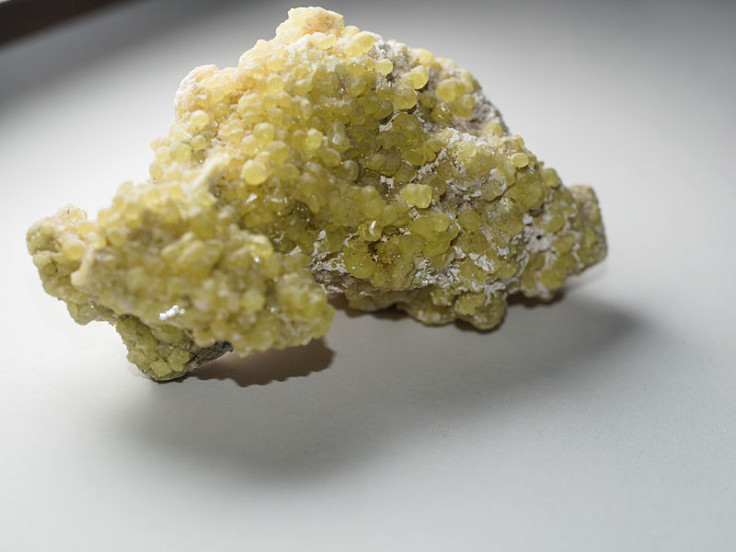Brimstone underworld: 90% of Earth's sulphur is in its core

The biblical idea of Earth's underworld being smouldering with and brimstone is not that far off as its core contains 90% of the planet's sulphur, scientists have discovered.
Earth's core starts 2.9km beneath the surface of the planet so scientists cannot study it directly, raising vast questions about its composition. For many years, researchers have known the core is too light to be made solely from iron and nickel.
It was thought it contained other lighter elements such as sulphur, oxygen, silicon and carbon – but solid evidence was impossible to get.
However, scientists at Durham University have now developed an indirect geochemical method of finding out the composition of the core.
Publishing their findings in the journal Geochemical Perspective Letters, the researchers were able to use a fingerprint from a distant cataclysmic event when Earth collided with a large planet-sized body. The impact led to the formation of the moon.
Scientists believe the collision melted Earth's mantle, allowing a sulphur-rich liquid to form between the core and the crust. While some was lost in space, some sunk into the core.
The team measured the isotope ratios of elements in the mantle and compared them to meteorites that are believed to match Earth's original composition billions of years ago. They analysed copper from Earth's mantle and crust because sulphur is often bound to it.

Senior author Frédéric Moynier explained: "[It is] a good element to trace the fate of sulphur on Earth. Generally, where there is copper, there is sulphur; copper gives us a proxy measurement for sulphur."
After estimating the isotopic composition of the copper in Earth's mantle and crust, the team produced the same estimate but for Earth before it formed a core and experienced the massive impact.
They then simulated which copper isotopic signature would be generated by the removal of the sulphur-rich liquid after the collision – findings confirmed there was a difference between the samples, meaning a large amount of sulphur must have been removed from the mantle.
Lead researcher Paul Savage said: "Scientists have suspected that there is sulphur in the core for some time, but this is the first time we have solid geochemical evidence to support the idea.
"This study is the first to show clear geochemical evidence that a sulphide liquid must have separated from the mantle early on in Earth's history – which most likely entered the core. We estimate that the quantity of sulphur in the core is vast, around 8.5 x 1,018 tonnes, which to give an idea of scale, is around 10% of the mass of the moon. In addition, the work adds weight to the theory that the moon was formed via a collision between the Earth and another body.
"In a way, we can also say that we have life imitating art. For millennia, tales have been told of the underworld being awash with fire and brimstone. Now, at least, we can be sure of the brimstone."
© Copyright IBTimes 2025. All rights reserved.






















